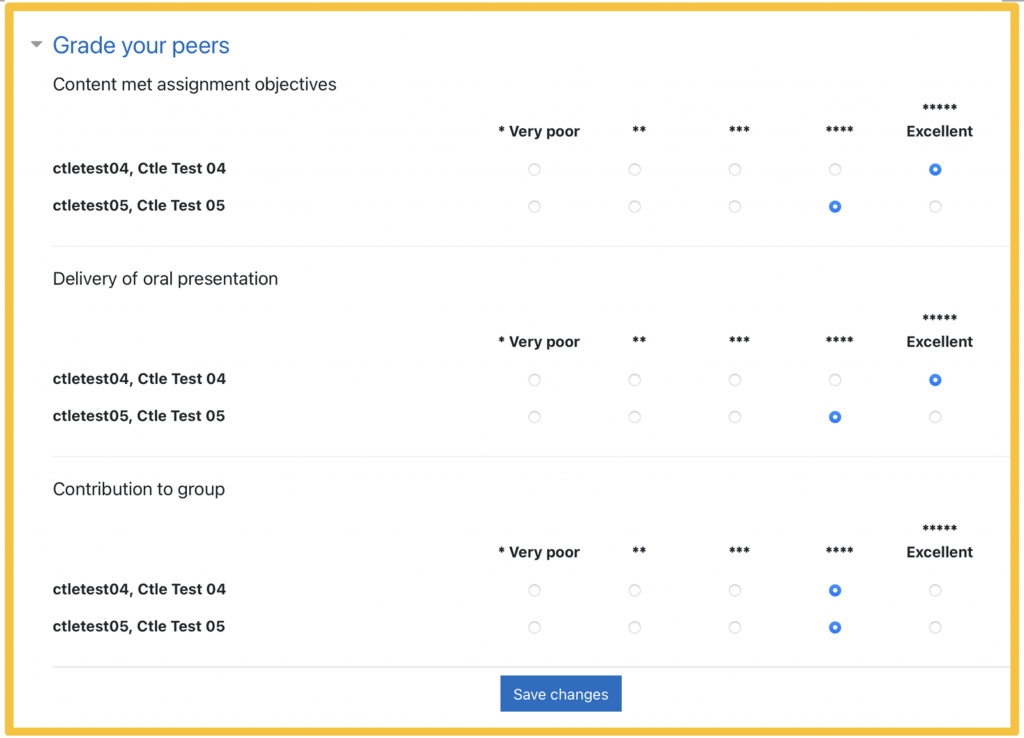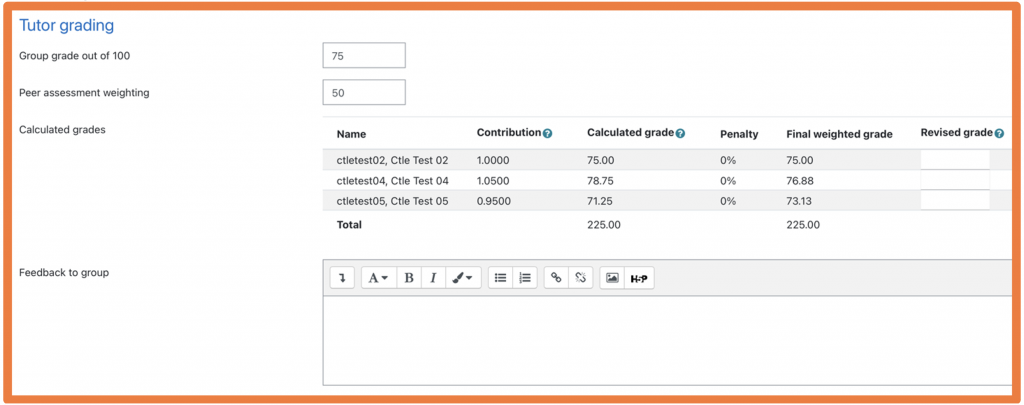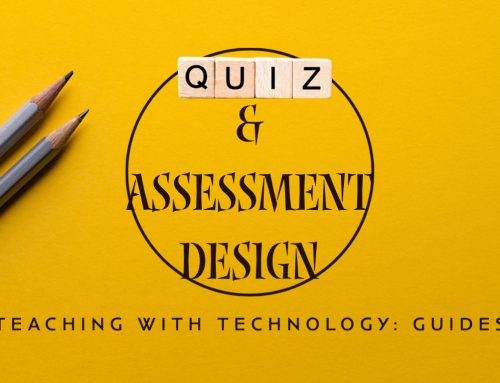Project Description
Peer assessment in Moodle

By Christopher Fulton, Centre for Teaching and Learning Enhancement
A new addition to UMMoodle, a peer assessment tool, can reduce the paperwork and time spent assessing individuals’ contributions to group projects and presentations.
Peer assessment, self-assessment, and student feedback are important aspects of teaching and learning that are widely discussed, well-documented and extensively researched. Arguably, graduates will need to evaluate their work and the work of their peers, and therefore opportunities for developing students’ evaluative judgement should be included in courses (Tai et al., 2018). Findings from recent research found that peer assessment tends to increase student learning as students give more attention to their work (Li et al., 2020). Also, Li et al. (2020) found that peer assessment had a greater impact when students were given training on how to conduct peer assessment. For more resources on designing peer assessments, see the resources on the page Peer Assessment.
Uses: students assess peers’ contribution to presentations and assignments
The peer assessment tool in Moodle enables teachers to give students in a group an individual grade based on the ratings from peers. This assessment tool in Moodle can be configured so that individuals can rate themselves, a teacher can indicate the weight of the peer and instructors’ grade, and a teacher can override the final grade for any individual. This peer assessment tool does require some planning and setting up, with two caveats; simple scales, not rubrics, are used by students to rate one another’s work and calculate a grade. Also, a teacher needs to enter the students’ grades for final grades to be calculated.
Previously, in Moodle there was no simple way to calculate an individual’s contribution to a collaborative assignment or group presentation.
- A teacher can use an “assignment” in Moodle to assess or give feedback to a group presentation but this gives each person in the group the same mark.
- Alternatively, a teacher can use the “workshop” activity in Moodle to give peer feedback, however, the workshop activity has a few impedients, e.g., requires a document to be uploaded, feedback is not easily made anonymous, and setting up a “workshop” can be intimidating even for experienced teachers.
Assessing individuals’ contributions to group projects or assignments with a “peer assessment” activity in Moodle
Process
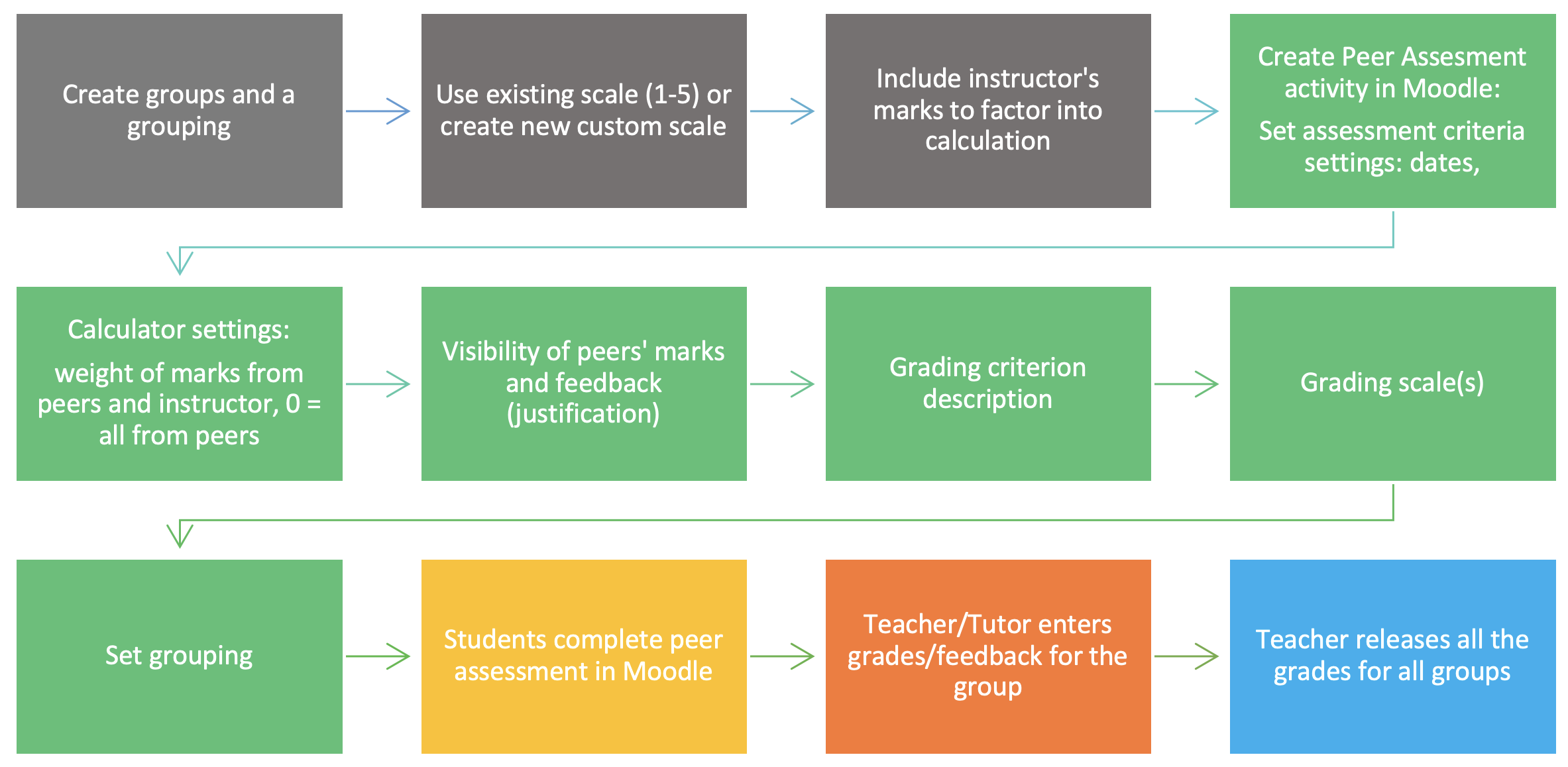
Guide
- Prior to setting up a peer assessment activity in Moodle, create groups and a grouping.
- Create a peer assessment activity and
-
- Set the date on which students can submit and a due date.
- If the students are assessing a group presentation or student-led class discussion, set the maximum number of uploaded files to 0.
- Students can be allowed to self-assess as well.
- Set the peer assessment weighting to 0% if no grade will be given by the teacher/tutor.
- Grades from peers can be hidden, and comments or justification can be disabled.
- For each criterion, add a very brief description and select the Excellent/Very poor scale (5 points), or create a new custom scale for your course.
- Examples of criteria might be:
Collaborative presentation criteria: content met assignment objectives, delivery of oral presentation, contribution to group.
Student-led class discussion: level of engagement, quality of responses, contribution to group.
-
- Set grouping for the assignment so students will rate the members in their group.
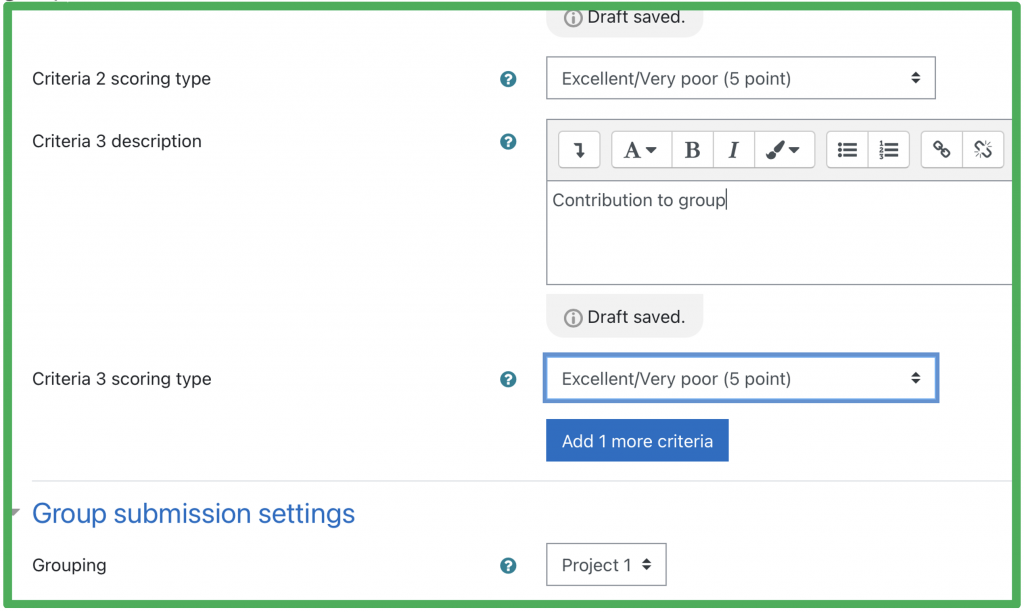
- Students rate one another in Moodle. First, the student will need to click Add Submission even if there is nothing to upload.
- A teacher or tutor grades or enters a grade for the group assignment and writes feedback for the group.
- Lastly, a teacher releases all the grades for all groups.
Video
https://www.youtube.com/watch?v=70FPR3c8Cx8
Resources
Carless, D., & Boud, D. (2018). The development of student feedback literacy: enabling uptake of feedback. Assessment and Evaluation in Higher Education, 43(8), 1315–1325. https://doi.org/10.1080/02602938.2018.1463354
Fisher, M. R., Jr., & Bandy, J. (2019). Assessing Student Learning. Vanderbilt University Center for Teaching. https://cft.vanderbilt.edu/assessing-student-learning/
Henderson, M., Ajjawi, R., Boud, D., & Molloy, E. (Eds.). (2019). The Impact of Feedback in Higher Education: Improving assessment outcomes for learners. Springer Nature.
Hesketh, I. (2017). WebPA Calculations. Learning Technology Hub, Edinburgh Napier University. https://blogs.napier.ac.uk/learningtechnologyhub/2017/10/03/webpa-calculations/
Iowa State University. (2020). Peer Assessment. Center for Excellence in Learning and Teaching (CELT). https://www.celt.iastate.edu/teaching/assessment-and-evaluation/peer-assessment/
Li, H., Xiong, Y., Hunter, C. V., Guo, X., & Tywoniw, R. (2020). Does peer assessment promote student learning? A meta-analysis. Assessment & Evaluation in Higher Education, 45(2), 193–211. https://doi.org/10.1080/02602938.2019.1620679
Monash University. (n.d.). Use scales in Moodle. Learning and Teaching. https://www.monash.edu/learning-teaching/teachhq/Assessment/marking-grading-and-rubrics/how-to/uses-scales-in-moodle
Oxford Brookes University (2020). How do I create a custom scale in Moodle? Online Assessment and Feedback. https://telsupport.brookes.ac.uk/articles/how-do-i-create-a-custom-scale-in-moodle/
Pereira, D., Flores, M. A., & Niklasson, L. (2016). Assessment revisited: a review of research in Assessment and Evaluation in Higher Education. Assessment and Evaluation in Higher Education, 41(7), 1008–1032. https://doi.org/10.1080/02602938.2015.1055233
Rogala, G., 2021. Peer Assessment Scoring Mechanism Explained. University of Limerick. https://support.moodle.ul.ie/?epkb_post_type_1=conducting-peer-assessment-with-peerwork
Loddington, S. (n.d.). Effective Practice Using WebPA. WebPA SIG, Loughborough University. https://webpaproject.lboro.ac.uk/academic-guidance/effective-practice-using-webpa/
Tai, J., Ajjawi, R., Boud, D., Dawson, P., & Panadero, E. (2018). Developing evaluative judgement: enabling students to make decisions about the quality of work. Higher Education, 76(3), 467–481. https://doi.org/10.1007/s10734-017-0220-3
UNSW. (n.d.). Student Peer Assessment. Teaching at UNSW. https://www.teaching.unsw.edu.au/peer-assessment
UNSW. (n.d.). Student Self-Assessment. Teaching at UNSW. https://www.teaching.unsw.edu.au/self-assessment
Winstone, N., & Boud, D. (2020) The need to disentangle assessment and feedback in higher education, Studies in Higher Education. https://doi.org/10.1080/03075079.2020.1779687
